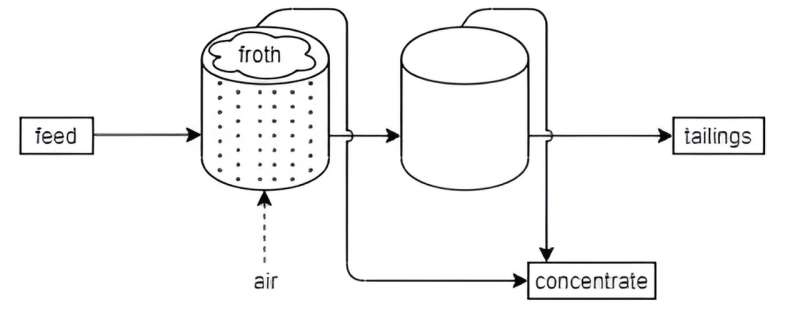
Research published in the International Journal of Mining and Mineral Engineering introduces a new approach to controlling mineral processing that uses active sensing. This method embeds intelligence within sensor systems, significantly reducing the need for human intervention in the process to improve efficiency and precision in mineral separation processes.
Even tiny improvements in efficiency can have a major economic impact on processing of ores containing copper, lead, and zinc, and even more so in the case of precious metals.
Active sensing involves the integration of intelligent sensor systems that minimize human involvement by optimizing measurement processes. These systems use a combination of different measurements to put detailed information into the broader context. Primary measurements are precise but limited in range, while auxiliary measurements provide broader, but more diffuse, data that can be used to guide the primary sensors to specific areas of interest that need detailed measurements.
Mikko Salo, Teijo Juntunen, and Risto Ritala of Tampere University in Tampere, Finland, have looked at this approach for froth flotation, an important process used in mineral processing. Froth flotation separates minerals based on how they interact with water, their water-repellent, or hydrophobic, character. A slurry of mixed minerals and water is treated with reagents to make certain particles hydrophobic. This makes them accumulate on air bubbles and so rise to the surface as froth.
This froth containing much of the mineral of interest from the slurry can be scooped off as concentrate for further purification and processing. The remaining slurry, known as tailings, flows out of the system.
In most contexts, X-ray fluorescence (XRF) analysis is used to measure mineral concentrations in froth flotation. While XRF is precise, it is slow and expensive. It also only works sequentially, typically measuring multiple slurry lines one after the other, which also reduces efficiency.
As a cost-effective alternative, visible and near-infrared (VNIR) spectral measurements might be used. VNIR measurements work faster, with one measurement every 3 seconds, instead of one every 5 minutes with XRF. But VNIR data is less accurate than XRF and needs continuous calibration based on XRF data.
To overcome these limitations, the researchers have developed a control architecture using a linear quadratic Gaussian (LQG) controller with exception handling. They have used a simulated environment with plant data from the froth flotation process to test this approach.
They demonstrated that the architecture optimizes the measurement sequence and incorporates interruptions when VNIR data detects anomalies. This ensures timely and accurate responses to process disturbances.
More information: Mikko Salo et al, Active sensing in froth flotation, International Journal of Mining and Mineral Engineering (2024). DOI: 10.1504/IJMME.2024.140070
Citation: New technique for mineral processing using active sensing (2024, July 23) retrieved 23 July 2024 from https://techxplore.com/news/2024-07-technique-mineral.html
This document is subject to copyright. Apart from any fair dealing for the purpose of private study or research, no part may be reproduced without the written permission. The content is provided for information purposes only.
